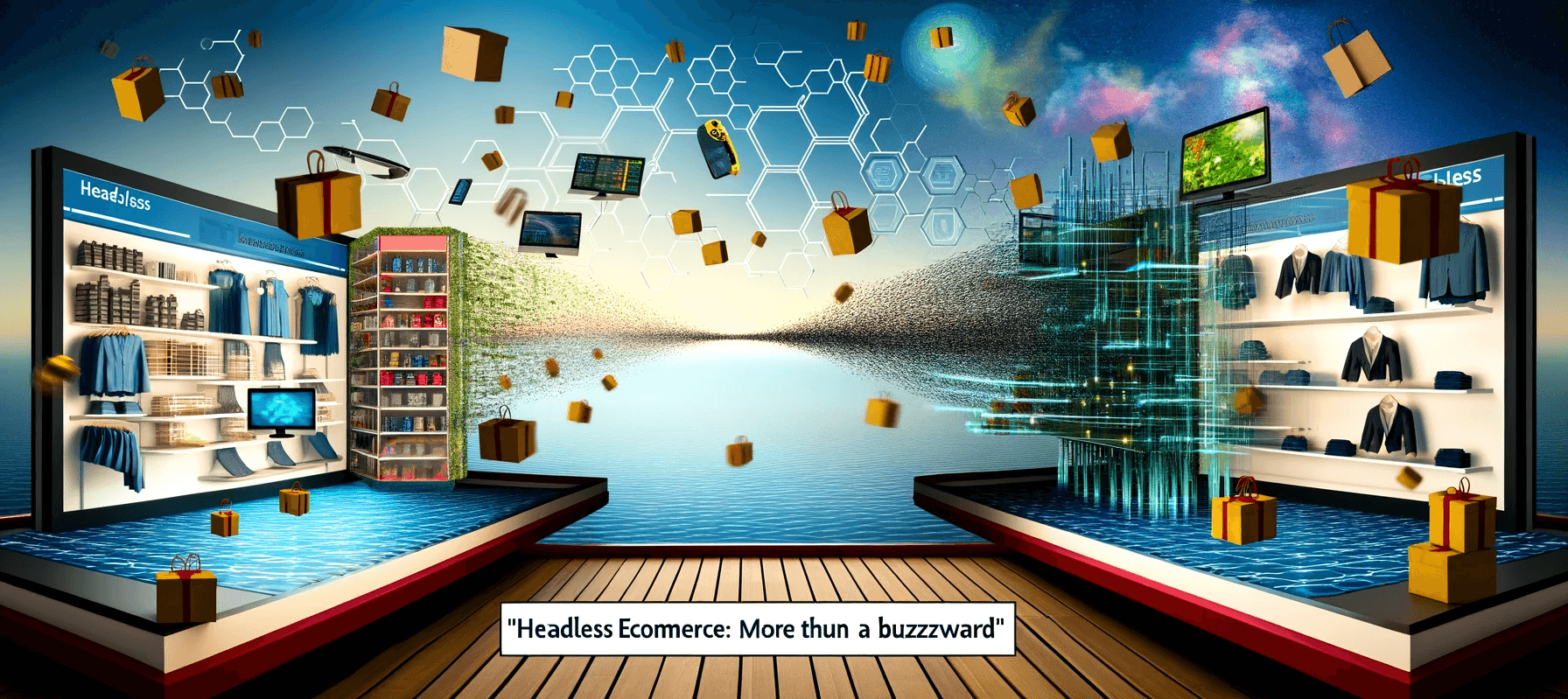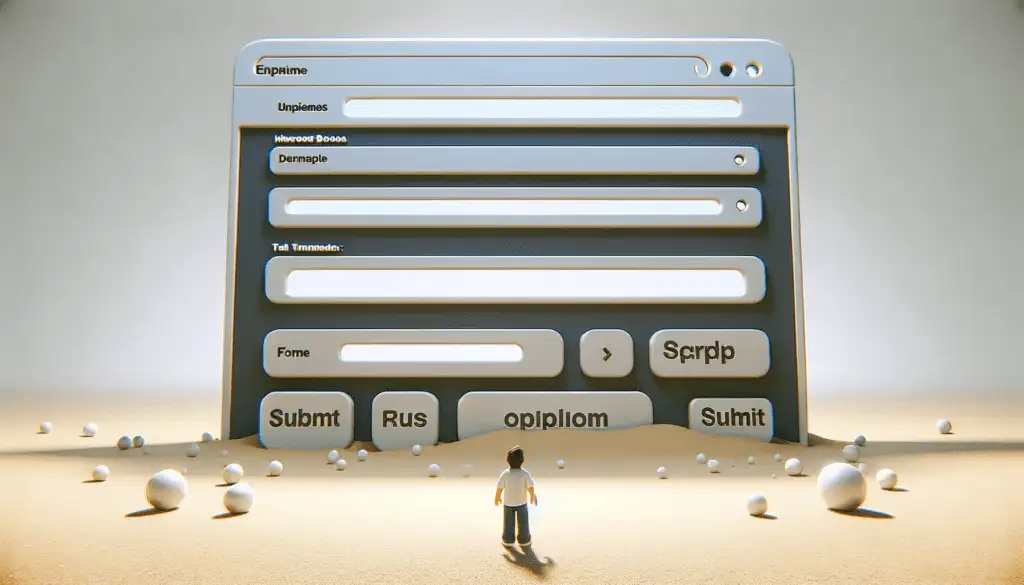Did you know that a whopping 56% of online shoppers abandon websites taking just 3 seconds to load?
That’s a tonne of lost sales and frustrated customers.
But what if you could create a lightning-fast, personalized online store that adapts to your customers’ needs?
Forget monolithic platforms, the future of ecommerce is decoupled and dynamic. Headless ecommerce is here to revolutionize your online business.
By decoupling the front-end (what your customers see) from the back-end (where the data lives), headless empowers you to build a dynamic, personalized shopping experience.
Imagine a website that remembers your preferences, suggests products you’ll love, and makes checkout a breeze.
That’s the power of headless, but there’s still one question that lurks, “Are you ready to ditch the frustration and embrace the future of ecommerce?”
The Genesis of Ecommerce: A Brief Retrospective
Standing out is both an art and a science.
The evolution of ecommerce has transitioned from mere online presence to delivering unparalleled user experiences. Headless ecommerce, the savior, is a paradigm shift aimed at redefining how online businesses operate and engage with their customers.
Brick-and-mortar limitations have been lifted and transformed into boundless digital possibilities. This digital leap enabled businesses to reach an international audience, a feat that was once considered a mere fantasy.
However, with great power comes great responsibility—and competition. As the digital landscape became more crowded, the quest for uniqueness and adaptability intensified.
Deciphering Headless Ecommerce: A New Era Unfolds
Think of it like having a beautifully decorated storefront (front-end)—appearance, layout, and user interface—where customers browse your products, powered by a robust engine (back-end) that handles orders and payments seamlessly.
With headless, you can change the storefront design without disrupting the engine, allowing for effortless customization and agility—managed separately but working together to create a memorable visit.
Farewell, Monolithic Storefronts! Headless Vs. Traditional Ecommerce
Most online stores are charming, yet quaint, brick-and-mortar shops—fixed layouts and limited inventory space.
Headless ecommerce, on the other hand, is a vendor where customization reigns supreme.
Forget cumbersome updates shackled to traditional platforms. Headless architecture breaks free, allowing you to adapt your storefront with the agility of a street vendor.
Market trends shift? Simply adjust your offerings instantly.
Customer demands evolve? Personalize your experience in a flash.
No more overhauling your entire system, just seamless transformations that keep you ahead of the curve.
This shift creates a truly unique online experience, captivating your customers with the endless possibilities of a sprawling market.
The Tangible Perks of Going Headless
Developers as Digital Artists
Everywhere You Are, They Remember You
Faster Loading, Happier Customers
Fort Knox for Your Store
By decoupling the front-end (presentation) from the back-end (data), you create a smaller attack surface for cyber threats, safeguarding sensitive information.
Future Forward
Seamlessly integrate cutting-edge technologies like AR/VR, voice search, and AI. Headless enables quick experimentation and adaptation, offering immersive experiences that keep your brand at the forefront.
Developers wield the brush and palette of digital innovation and create bespoke user experiences.
This freedom implies that each store can be as unique as the brand it represents, creating an experience that resonates deeply with the audience.
No more disjointed experiences across channels. Headless ensures a seamless journey, regardless of whether customers interact with your brand via website, app, or social media.
Preferences and history flow smoothly, fostering brand loyalty.
Forget sluggish pages and impatient customers. Headless architecture optimizes performance, resulting in lightning-fast loading times.
This keeps users engaged and reduces bounce rates, boosting conversions.
Navigating the Challenges
Initial Setup and Ongoing Costs
From Point and Click to Collaboration
Upskilling for the Future
Building Your Tech Dream Team
If you lack in-house expertise, don’t be discouraged! Many agencies specialize in headless implementation. Weigh the options to find the tech talent that fuels your headless journey.
Connecting the Dots… Smoothly
Let’s be honest here, crafting a unique front-end requires more upfront effort compared to standard platforms.
The initial development phase might take your time and financial resources. But remember, you’re not just buying a website; you’re investing in a powerful, future-proof foundation for your brand.
Headless isn’t just about technology; it’s a shift in workflow.
Launching campaigns without a traditional interface might seem daunting, but remember, collaboration is key!
Explore headless-specific marketing solutions, forge closer ties with the development team, and use project management tools for a smoother transition.
Embracing headless means embracing continuous learning. While there’s a curve, numerous resources like tutorials, communities, and training programs can help your team bridge the gap.
Consider strategic resource allocation, upskilling existing personnel, or partnering with headless experts to navigate the dual system effectively.
Headless offers integration flexibility, but complexity can vary. While custom development might be needed for some integrations, remember—you’re not alone!
Many headless platforms provide pre-built connectors and support resources to streamline the process.
A Conclusive Reflection
Headless architecture is not just a trend; it’s a fundamental shift in the ecommerce space.
Headless doesn’t just whisper promises; it roars with opportunity, innovation, scalability, and crafting unique customer journeys. While embracing this approach requires careful consideration, it represents a forward-thinking leap towards exceeding customer expectations.
The choice between headless and traditional platforms signifies a larger shift—the evolution of the digital marketplace towards agility, customization, and customer-centricity. Just as the depth of commerce transforms, so must businesses.
FAQs
What is Headless Ecommerce?
Headless ecommerce refers to the separation of the front-end presentation layer of a website from the back-end ecommerce functionality. This approach allows for greater flexibility, speed, and customization, enabling businesses to create a unique and dynamic user experience.
How Does Headless Ecommerce Differ From Traditional Ecommerce?
Unlike traditional ecommerce, where the front-end and back-end are tightly coupled, headless ecommerce separates these two layers. This separation allows for more agility in updating the storefront and integrating new technologies without disrupting the back-end systems.
What Are the Main Benefits of Adopting Headless Ecommerce?
The key benefits include faster loading times, improved user experiences, enhanced customization options, and better integration capabilities with other technologies and platforms.
Can Headless Ecommerce Improve Site Performance and Customer Satisfaction?
Absolutely. By optimizing the website’s performance and providing a personalized user experience, headless ecommerce can significantly enhance customer satisfaction and loyalty.
How Does Headless Ecommerce Impact SEO and Marketing Efforts?
Explore how decoupling the front-end and back-end can influence SEO strategies and the implementation of marketing campaigns, considering the need for new approaches or tools.
What Kind of Businesses Can Benefit Most From Headless Ecommerce?
Discuss which sectors or types of ecommerce businesses can gain the most from transitioning to a headless architecture, considering factors like size, product complexity, and market demands.



